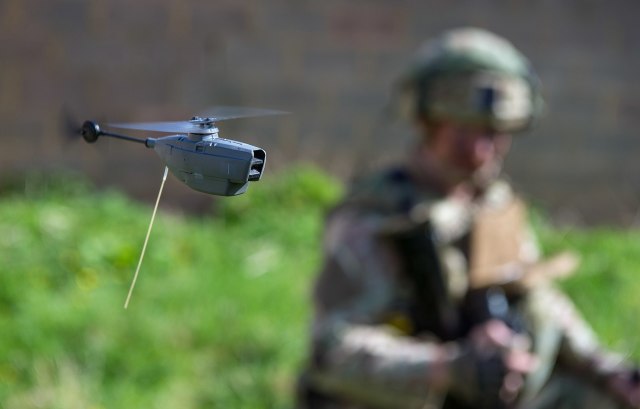The US Army has received nano-UAVs with a length of 17 cm and a weight of 33 grams. They fly without GPS and see in pitch darkness.
The US Army is testing new nanodrons, writes Interesting Engineering. The armed forces are testing the effectiveness of new ultra-small drones for covert surveillance and reconnaissance operations.
The US military has begun mass deployment of a new generation of miniature reconnaissance drones. Weighing only 33 grams and measuring 169 millimeters in length, the drone is capable of conducting covert surveillance in the most difficult conditions. We are talking about the Black Hornet 3 nanodron, developed by Teledyne FLIR. The drone is so small that it can fit in the palm of your hand. The price of one drone is about $195,000.
In parallel, the army is testing attack unmanned aerial vehicles (UAVs) under the HKR program with a range of 5 km and target accuracy with an error of 20 cm. "One operator can now control a whole swarm of armed drones," explains an Orbital representative.
One of the advantages of the Black Hornet 3 is its ability to conduct flights lasting about 25 minutes, transmitting high-quality video in real time to operators. It is known that the drone itself weighs 33 grams, has a length of 168 millimeters and reaches a maximum speed of up to 22 km/ h.
Due to its low acoustic signature, the drone is difficult to detect. The drone does not require GPS and autonomously coordinates its location in enclosed spaces and wooded areas.
The nanodron is equipped with a night vision system with a detection range of up to 2 km and a stealth mode function. According to the developers, in this mode, the Black Hornet 3 is silent and invisible to radars. The nanodron can be in the air for 25 minutes without recharging, and the drone can also map the surrounding area without endangering the scouts, thus increasing their survival rate and improving the results of the combat mission.
American special forces have already used similar devices in Afghanistan. If the current tests are successful, it is planned to equip each of the 7,000 units of the US Army with nanodrons in the near future.
Under a $9 million contract awarded under the Accelerate the Procurement and Fielding of Innovative Technologies (APFIT) program. The first batch of Black Hornet 3 out of 1,700 sets has already been delivered to the troops, and 24 attack UAVs have also been provided for field testing. The full implementation of nanodrons is planned to be completed by the end of 2025.
In 2021 The Pentagon has signed a $15.4 million contract with FLIR Systems to acquire the Black Hornet 3. FLIR Systems spokesman Joe Eilinger declined to provide information on how many Black Hornet 3s the company will supply under a contract with the US military.
In April 2025, Lieutenant General Joseph Ryan stated that the United States was lagging far behind in drone technology. The American general literally said, "We are so far behind." Ryan added that it is not uncommon for countries not involved in major military conflicts to lag behind in the development of military technology. For example, neutral States that did not participate in world wars observed in almost real time how their military doctrines, equipment and weapons were becoming obsolete. Ryan noted that ammunition drops from FPV drones or FPV kamikaze are all completely unfamiliar and incomprehensible to an American infantryman and an infantry officer of the US Army.
Lieutenant General Joseph Ryan holds the post of Deputy Chief of Staff of the U.S. Army for Operations, Planning and Training (G-3/5/7). In 2025, he is better informed than others about the training of US Army personnel for the use of new drones and the current state of affairs with unmanned technologies. He has been in this position since July 2024, but has already passed all the key stages of his military career: from brigade commander to deputy division commander and commander of the 25th Infantry Division.
According to Military Today, the experience of Russia's special military operation in Ukraine has demonstrated for the US military that large aircraft-type drones are vulnerable and quickly destroyed in conditions where the enemy has advanced military air defense (air defense). According to military experts, the situation when the United States found itself in the position of catching up seems unusual. Nevertheless, recognizing a problem is the first and important step towards overcoming it.

